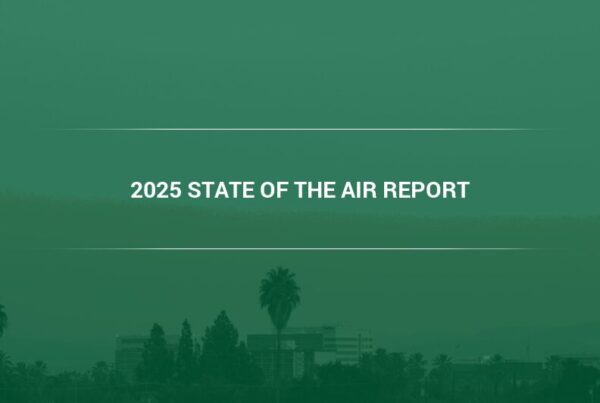Learn about how an airport in Minnesota is trying to tackle air quality
Airports are one of the most congested areas in major cities, because they are often located in places with high vehicle traffic and industrial processes. As a result, airport pollution has become one of the persistent problems for city officials, as they grapple with the long-term effects of bad air. There is hope, however, as some airports are taking the initiative to push through measures to lower pollution.
“There is really no optimum way to lower the amount of indoor pollutants at airports without first addressing how to reduce outdoor pollution at these places,” stated Kevin Wood, Camfil USA Vice President Sales & Marketing. “That is why you are seeing more initiatives at major airports aimed at lowering the amount of airborne pollutants. This may be a key aspect of improving indoor air quality.”
Sobering Airport Pollution Statistics
Vehicle exhaust and factory emissions are among the most common causes of airport pollution in major urban areas.
And far from being just a nuisance, airport pollution has become a real health care issue throughout the world.
Fine particulate matter and ozone emissions from civil aircraft are responsible for around 16,000 premature deaths annually across the world, according to a study carried out by researchers at the Massachusetts Institute of Technology (MIT) in the US. (1)
“We found that unregulated emissions from [planes flying] above 3,000 feet were responsible for most of the deaths,” stated Professor Steven Barrett, the author of the study and an aeronautical engineer at the Massachusetts Institute of Technology in Cambridge. “Regulators need to explicitly consider the impact of cruise emissions on human health.”
The challenge is that many of the pollutants generated at airports are particulate matter (PM) that is microscopic in size, much smaller than a strand of human hair and capable of being inhaled or swallowed.
Once inside the bloodstream, PM can burrow deep into the lungs and cause a number of respiratory problems.
The study also found that worldwide, an estimated 8,000 fatalities each year are caused by pollution generated by planes at cruising altitude, which is typically 35,000 feet.
Researchers had previously thought that the most dangerous emissions from aircraft occurred at takeoff and during landings, but this new study contradicts that belief.
But despite the challenge of airport pollution, researchers are convinced that the problem is manageable.
For example, sulfur is a significant component of jet fuel and has a damaging effect on human beings, but according to Barrett, it would cost only five cents a gallon in the U.S. to remove most of the sulfur in jet fuel.
Minnesota Airport Takes Steps to Reduce Airport Pollution
Officials who operate the Minneapolis-St. Paul International Airport are trying to do their part to lower air pollution.
Per a report by MPR News, the airport implemented new procedures two years ago, which requires airplanes to remain at cruising altitude for a longer period of time, rather than just approaching the airport.
According to Metropolitan Airports Commission Executive Director and CEO Brian Ryks, the new procedures are having a positive effect. (2)
“By keeping the aircraft throttle pulled back, they burn less fuel,” Ryks stated. “And consequently, [they] emit less carbon dioxide exhaust than they would using a traditional, staged descent to the runway.”
The new procedures have resulted in planes burning three million fewer gallons of fuel per year, and airport officials estimate that thousands of metric tons of carbon dioxide would be reduced in the airport area and adjacent communities affected by airport pollution.
This is significant, because a recent study has found that airport pollution has a wider impact than previously thought.
The Minnesota Post published a study that found that, (3) “a significant fraction of urban dwellers living near airports likely receive most of their outdoor [particle matter] exposure from airports rather than roadway traffic.”
Much of those pollutants are composed of sulfur dioxide and nitrogen dioxide that is released through jet exhaust vapors. These pollutants have been linked to serious ailments such as asthma and chronic obstructive pulmonary disease (COPD).
Another study found that children who lived near Logan International Airport in Boston were, “four times more likely to exhibit signs of undiagnosed asthma than children living in communities further away, even after taking into account socioeconomic and other factors.”
This all points to the importance of reducing airport pollution levels in order to improve health conditions for those working at the airports, and for residents in nearby neighborhoods.
Clean Air Solutions for Airport Pollution
Camfil offers airport grade air filters that can be used in fresh air intake systems, or in recirculation air systems. Camfil recognizes that many pollutants inside airports are generated by outdoor contamination, and our filters are designed to eliminate particulate pollutants and molecular pollutants.
Please visit our website for more information about the clean air solutions we provide for airports.
Lynne Laake
Camfil USA Air Filters
T: 888.599.6620,
E: Lynne.Laake@camfil.com
F: Friend Camfil USA on Facebook
T: Follow Camfil USA on Twitter
Y: Watch Camfil Videos on YouTube
SOURCES
- http://news.nationalgeographic.com/news/2010/10/101005-planes-pollution-deaths-science-environment/
- https://www.mprnews.org/story/2017/04/17/airports-new-approach-saves-jet-fuel-improves-air-quality
- https://www.minnpost.com/second-opinion/2014/06/airport-pollution-may-have-been-seriously-underestimated-study-suggests



